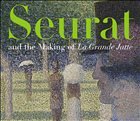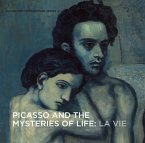"Bedlam", "scandal", and "hilarity" were among the epithets used to describe the effect of what is now considered Georges Seurat's greatest work, and one of the most remarkable paintings of the nineteenth century, when it was first exhibited in Paris in 1886. A Sunday on La Grande Jatte-1884, an extensive landscape peopled with over forty figures, took the artist almost two years to complete. Inspired by research in optical and color theory, Seurat juxtaposed tiny dots of colors on the canvas that form a single and more brilliantly luminous hue in the viewer's eye. This sumptuous book, created to accompany a major exhibition at the Art Institute of Chicago, provides a fascinating, in-depth examination of the gestation, execution, and influence of Seurat's masterpiece.
La Grande Ja t t e has been part of the Art Institute of Chicago's collection since 1926. Bringing together all known studies and drawings directly related to the painting, this volume provides a visual and contextual survey of Seurat's working methods and aesthetic priorities, as well as the evolutionary process that culminated in his singular achievement. Included are more than fi ft y - five prepartory works, ranging from rich conté crayon drawings to oil sketches on small wood panels to larger studies painted on canvas. In their quantity, intricacy, and variety, these works reveal a compositional process that harks back to Old Master traditions and methods, which had been largely abandoned by Seurat's immediate predecessors, the Impressionists. The many studies attest to the artist's ambitions for his masterpiece and open up a broader context for understanding the painting.
Robert L. Herbert, who has written extensively on the artist, traces Seurat's beginnings in the context of Barbizon painting and Impressionism. Works by Monet, Pissarro, and Renoir are included, as well as a discussion of La Grande Jatte's influence on contemporary art and Seurat's impact on twentieth- century artists such as Léger and others from the School of Paris. An accompanying essay by Neil Harris assesses La Grande Jatte's iconic status in Chicago and beyond, considering a history of the painting's promotion, presentation, and exhibition. A landmark publication, this book provides dazzling proof of why La Grande Jatte is among the most frequently reproduced paintings in the world and why it continues to fascinate scholars and art lovers today.
"The miracle of La Grande Jatte is its coincidence of critical distinction and popular celebration.High, low, mass, and popular cultures meet in mutual delight, continuing to revel in the mysteries of that Parisian Sunday."
-from"The Park in the Museum" by Neil Harris
La Grande Ja t t e has been part of the Art Institute of Chicago's collection since 1926. Bringing together all known studies and drawings directly related to the painting, this volume provides a visual and contextual survey of Seurat's working methods and aesthetic priorities, as well as the evolutionary process that culminated in his singular achievement. Included are more than fi ft y - five prepartory works, ranging from rich conté crayon drawings to oil sketches on small wood panels to larger studies painted on canvas. In their quantity, intricacy, and variety, these works reveal a compositional process that harks back to Old Master traditions and methods, which had been largely abandoned by Seurat's immediate predecessors, the Impressionists. The many studies attest to the artist's ambitions for his masterpiece and open up a broader context for understanding the painting.
Robert L. Herbert, who has written extensively on the artist, traces Seurat's beginnings in the context of Barbizon painting and Impressionism. Works by Monet, Pissarro, and Renoir are included, as well as a discussion of La Grande Jatte's influence on contemporary art and Seurat's impact on twentieth- century artists such as Léger and others from the School of Paris. An accompanying essay by Neil Harris assesses La Grande Jatte's iconic status in Chicago and beyond, considering a history of the painting's promotion, presentation, and exhibition. A landmark publication, this book provides dazzling proof of why La Grande Jatte is among the most frequently reproduced paintings in the world and why it continues to fascinate scholars and art lovers today.
"The miracle of La Grande Jatte is its coincidence of critical distinction and popular celebration.High, low, mass, and popular cultures meet in mutual delight, continuing to revel in the mysteries of that Parisian Sunday."
-from"The Park in the Museum" by Neil Harris








